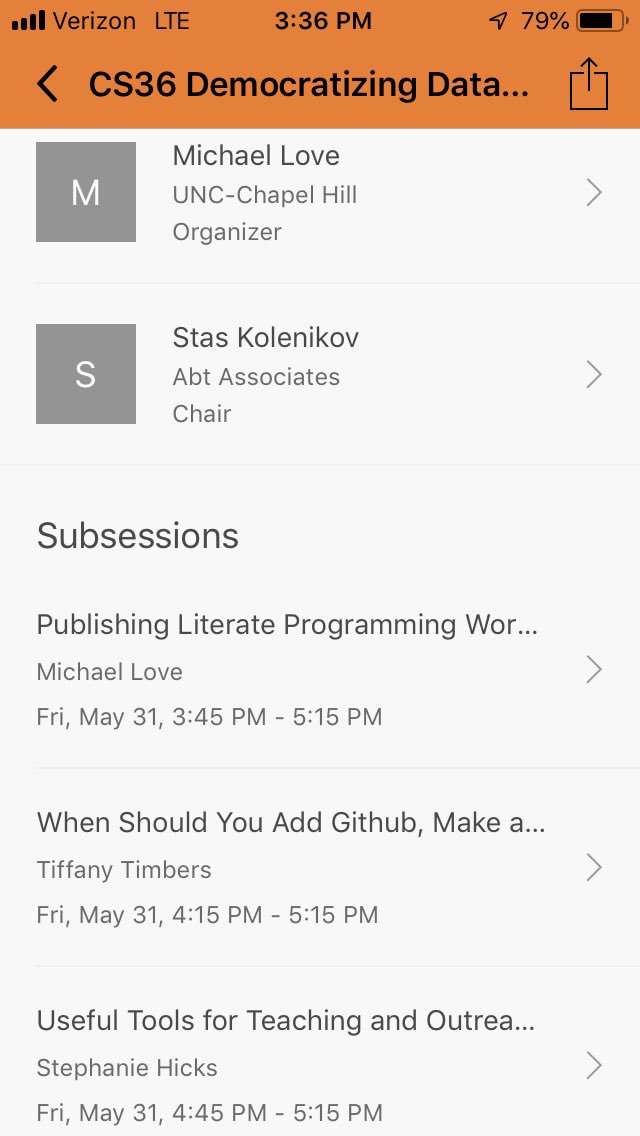
- #RMarkdown -> overleaf -> F1000Research
- Jupyter Notebook -> supplement along with the paper
- #CodeOcean capsule
- eLife (in development -- The First Reproducible Paper)
define "releases" as important checkpoints in time of your project
- a shell script
- makefile
- GNU make
- snakemake (for Python)
- Nextflow
(SK: library(drake) )
(SK: #Stata -project-)
1. anybody can recreate your analysis
2. one can better see how the bits of your analysis relate to one another
1. Install Docker
2. clone github repo
3. run one single docker command
hub.docker.com/r/ttimbers/dat…
1. version control: ALWAYS
2. executable analysis/scripts: when you start hiding chunks in rmd/ipynb
3. shippable dependencies: remote computing, tricky dependencies
1. Teach statistical thinking.
2. Focus on conceptual understanding.
3. Integrate real data with context and purpose.
4. Foster active learning
5. Use technology to explore concepts, analyze data.
6. Use assessments to improve, evaluate student learning









